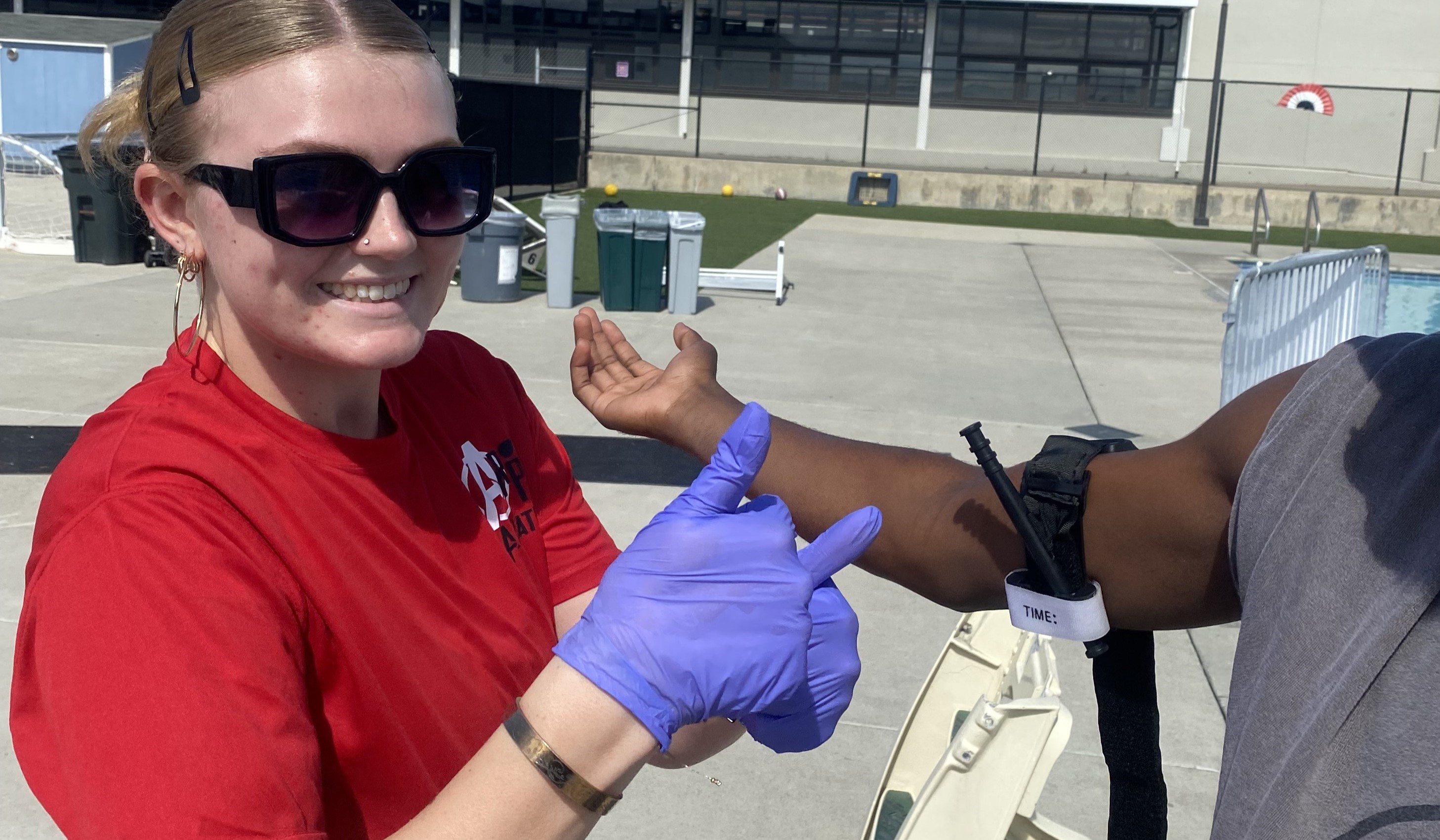The newest addition to the National Electrical Code, made in the 2008 version, requires builders to bond the water to the equipotential bonding grid of the pool. This is fairly controversial. Some believe this addition necessary to ensure that the water doesn’t have a different potential than the equipment and pool structure. Others believe there is no hazard if the pool is completely insulated and electrically isolated through traditional grounding and bonding. The National Electrical Code panel continues to discuss this matter as it prepares the 2011 NEC.
While some have found the new requirement confusing, it is actually straightforward. In many cases it doesn’t require doing anything different. Simply use a metallic element of 9 square inches or more that comes into contact with the water. Any item or combination of items already required to be bonded and in contact with the water meets this requirement — as long as they add up to 9 square inches of space combined.
A metal ladder would be one example. Attach it to the bonding grid with your No. 8 wire and appropriate connectors, as required by the NEC. If you’re using the ladder, do this with both pockets, just as you would do anyway to meet the code.
Some inspectors claim that the 9 inches of metal to bond the water is required in addition to ladders and the like. However, if you already include these elements and they add up to 9 inches or more, no extra step is necessary, says E.P. Hamilton III , an electrical engineer and president of Hamilton & Associates in Pflugerville, Texas
But bonding to water is an absolute requirement under the 2008 edition of the NEC, so if you aren’t currently designing the pool with a metallic ladder, handrails or light with a metallic niche, you’ll need to add something with at least 9 square inches of metallic surface area.
MAIN ARTICLE
- On the Grid
Electricians and engineers list some common mistakes in grounding and bonding pools.
MORE INFORMATION
- Bonding the Water
There is controversy over whether it should be required for builders to bond the water to the equipotential bonding grid of the pool.
- Electrical Resources
Looking for more insight on electr/ical issues? Check out these links.
- Pool and Spa Bonding and Grounding Schematic


